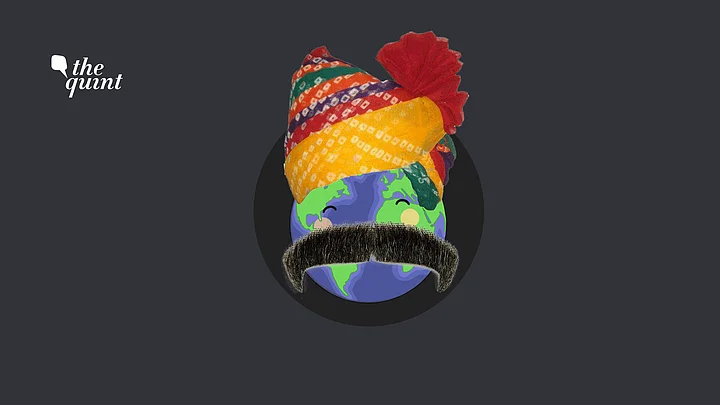(This article was first published on 22 August 2020. It has been republished from The Quint’s archives due to former Union Minister Jaswant Singh’s demise.)
Harry Harris, the American ambassador to South Korea shaved off his moustache in late July. He claimed he did so to feel cooler in the summer but that was not the true reason. He took this unusual step because it had become controversial.
Now why should a moustache become so? It was neither too long nor too short. It was simply nondescript. In any other country it would not have attracted attention. But not so in South Korea. There, it offended people.
It reminded them of the kind of moustache sported by Japanese military leaders who had brutally ruled Korea from 1910 to 1945. And Harris’s mother is Japanese. That added to the association in many minds. Bizarre, but true!
India-Pakistan Diplomacy and Attire
As a former professional diplomat, I know the importance of knowing the sensitivities of foreign cultures and avoiding their taboos. That is a lesson that professional diplomats learn very early in their careers. Never though through my working life did I ever hear of an envoy’s moustache, or a beard for that matter, becoming controversial, capable of causing or adding to bilateral tensions.
So, naturally, the news of the Harris moustache caught my attention and made me think of other instances when personal apparel or head gear became politically and diplomatically significant.
And one of these was during the Lahore visit of Prime Minister Atal Bihari Vajpayee in February 1999.
Prime Minister Nawaz Sharif hosted the official banquet for his Indian guest at a historic setting—the Diwan-e-Khas of the Lahore fort. Vajpayee and senior members of the delegation including External Affairs Minister Jaswant Singh were naturally at the main table in the pavilion along with the principal host and his senior companions. The rest of the party were sitting in the garden in front of the pavilion.
The proceedings were delayed by the violent agitation of the Jamaat-e-Islami but once the banquet began the atmosphere was hopeful. Nawaz Sharif, himself famous for his passion for food, had no effort spared for preparing a splendid many courses meal.
When the banquet was over Vajpayee and the senior delegation members got up to leave. So did everyone else. At this stage I found myself behind Jaswant Singh. He put his hand in his bandhgala jacket and took out a piece of twirled silk cord and told me to keep it. “Guard it well” he said.
I was intrigued. “Sir, what is this” I asked. He smiled and told me to give it to him when we returned to Delhi. I could ask no further for Jaswant Singh went ahead. The next day was taken up with the Lahore Declaration and that evening Vajpayee returned to Delhi. My curiosity continued.
When I gave the cord to Jaswant Singh I asked again “What is this”? He smiled and said “The size of Nawaz Sharif’s head”! Baffled, I asked “For what purpose”? He said for “Safas”. And then the story came out.
Jaswant Singh had worn a splendid Rajasthani safa at the banquet. With his stately bearing he stood out in the gathering adding lustre to the safa. Nawaz Sharif admired it and Jaswant Singh graciously told him that he would have a set made for him.
So, a minion was tasked to find a way to take a measurement of Sharif’s head. I rather suspect the cord used for the purpose was a tassel taken from a menu at the main table.
A couple of months later a set of safas was sent to Sharif. But there is a twist to this tale. While telling him that he would send him the safas, Jaswant Singh also said that once a person accepted a safa sent by another a fraternal bond of ‘safaband bhais’ was created. This was a sacred relationship which required to be honoured. It is doubtful if Nawaz Sharif appreciated these ancient codes of honour. The events of Kargil showed that.
Identity and Diplomacy
Headgear was a mark of identity in times past and still is in some parts of the world. I learnt this during one of my visits to Tajikistan. It was winter and I had put on a Chitrali cap that I had picked up in Kabul. It also became identified with some sections of the Mujahideen during the Afghan jihad. At the Dushanbe airport a Tajik mistook me for a Pakistani and began a conversation. I told him that I was from India. Out came a sharp remark. “Why are you wearing a Chitrali cap”, he asked. I could only smile somewhat sheepishly.
With these detours, let me return to the Harris moustache to make this addition. He had a very distinguished career in the American navy, retiring as a four-star admiral as head of his country’s Pacific Command. All through his period in the navy he did not have a moustache. What made him think that growing one would make a better diplomat?
In any event if all this had happened in India many would have said “Dekha mooch moondwa di”! I wonder if some in South Korea felt the same.
(The writer is a former Secretary [West], Ministry of External Affairs. He can be reached @VivekKatju. This is an opinion piece, and the views expressed above are the author’s own. The Quint neither endorses nor is responsible for them.)
(At The Quint, we question everything. Play an active role in shaping our journalism by becoming a member today.)
